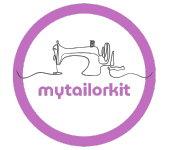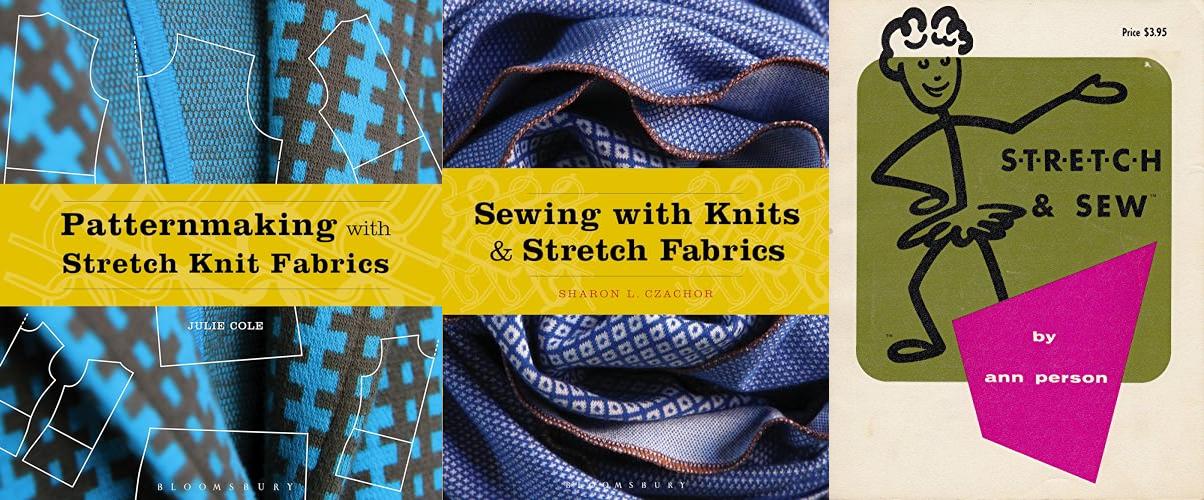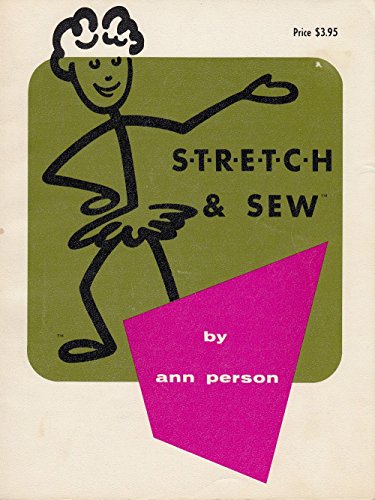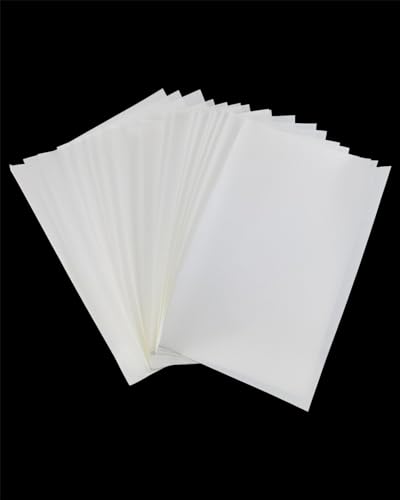Ever tried to sew with stretchy fabric and ended up with a mess of skipped stitches and wavy seams? You’re not alone! Many crafters find working with materials like knits and spandex a real challenge. It’s frustrating when your sewing machine seems to fight against you, leaving you with projects that don’t look quite right.
Choosing the right stitch for your stretch fabric is super important. The wrong stitch can make your seams pop open when you stretch them, or it can create ugly, puckered lines. It’s like trying to use a regular hammer for a delicate job – it just doesn’t work!
But don’t worry! In this post, we’ll break down the best stitches for stretch fabrics. We’ll show you exactly what to use and why it works. By the end, you’ll feel confident tackling any stretchy project, from t-shirts to activewear.
Let’s dive in and learn how to make your stretchy seams strong and smooth!
Our Top 5 Stitch For Stretch Fabric Recommendations at a Glance
Top 5 Stitch For Stretch Fabric Detailed Reviews
1. Patternmaking with Stretch Knit Fabrics: Studio Instant Access
Rating: 8.9/10
Patternmaking with Stretch Knit Fabrics: Studio Instant Access is a digital resource that helps you create patterns for stretchy clothing. It’s designed for people who want to make their own activewear, comfortable dresses, or any garment made from knits. This access gives you tools and knowledge right away to start designing.
What We Like:
- Instant access means you can start learning and designing immediately.
- It focuses on a specific type of fabric (stretch knits), which can be tricky to work with.
- The “Studio” part suggests it might offer a professional or comprehensive approach.
- It’s likely a convenient way to learn a specialized skill from home.
What Could Be Improved:
- The “N/A” for features is concerning; more information about what’s actually included would be helpful.
- Without knowing the specific features, it’s hard to say if it covers all the essential aspects of knit patternmaking.
- The platform or format of the “Studio Instant Access” isn’t clear, which could affect user experience.
This resource offers a quick start for anyone eager to tackle knit fabrics. More details on its specific tools and lessons would make it a clearer win.
2. Sewing with Knits and Stretch Fabrics: Studio Instant Access
Rating: 9.3/10
Sewing with knits and stretch fabrics can be tricky. This “Sewing with Knits and Stretch Fabrics: Studio Instant Access” promises to make it easier. It’s designed for anyone who wants to conquer those wiggly, stretchy materials. You’ll find helpful tips and techniques to get great results.
What We Like:
- Clear instructions make complex techniques understandable.
- It covers a variety of common knit fabrics.
- You can access it immediately, so no waiting!
- It helps prevent skipped stitches and puckering.
- You can learn at your own pace, whenever it’s convenient.
What Could Be Improved:
- More advanced techniques could be included.
- A few more project examples would be helpful.
- The layout could be a little more visually engaging.
This “Studio Instant Access” is a solid resource for home sewers. It provides the knowledge you need to successfully sew with knits.
3. S-T-R-E-T-C-H (Stretch) & SEW : Instruction Book for Sewing with Knit Fabrics
Rating: 8.9/10
Sewing with stretchy fabrics like knits can be tricky, but this S-T-R-E-T-C-H (Stretch) & SEW : Instruction Book for Sewing with Knit Fabrics is here to help. It breaks down the process into easy steps so you can create amazing garments. Whether you’re a beginner or have sewn before, this book makes understanding knit fabrics simple. You’ll learn how to handle them without frustration. Get ready to sew all your favorite stretchy clothes!
What We Like:
- Clear, step-by-step instructions make sewing knits less confusing.
- Helps you avoid common mistakes like skipped stitches and wavy seams.
- Covers different types of knit fabrics and their specific needs.
- Offers helpful tips for choosing the right needles and thread.
- Empowers you to sew comfortable and stylish knit clothing.
What Could Be Improved:
- Could include more visual aids like diagrams or pictures for some techniques.
- More examples of specific projects or advanced techniques would be a bonus.
This book is a fantastic resource for anyone wanting to conquer knit fabrics. It provides the knowledge you need to sew with confidence and create wonderful stretchy projects.
4. Stitch Witchery 20 Sheets
Rating: 8.7/10
Unleash your creativity with Stitch Witchery Fusible Webbing! This handy pack of 20 sheets, each measuring 8″ x 12″, offers a medium-weight, paper-backed solution for all your fabric crafting needs. It’s designed to bond fabrics together without any sewing, making it perfect for quick fixes and impressive DIY projects.
What We Like:
- No sewing needed: Easily turn any fabric into a fusible fabric, bonding it to other fabrics, wood, or cardboard for durable and flexible connections.
- High-quality material: Made from eco-friendly thermoplastic adhesive, it creates a strong bond that doesn’t leave marks and maintains the fabric’s softness.
- Secure and washable: The stitch witchery provides a tight seal that holds up even after washing, ensuring your creations last.
- Versatile applications: Ideal for hemming, repairing clothes, creating fabric art, and countless other DIY crafts, offering endless creative possibilities.
- Easy to use: Simply place the web between fabrics, iron, and let it cool for a firm bond.
What Could Be Improved:
- Specific temperature needed: Requires a consistent heat of 275-320°F for proper melting and bonding.
- Not for all materials: Primarily designed for porous surfaces, may not adhere as well to non-porous materials.
This Stitch Witchery fusible webbing is a fantastic tool for crafters of all levels. It simplifies projects and opens up a world of creative possibilities for fabric enthusiasts.
5. 24 Sheets Stitch Witchery
Rating: 9.3/10
Unlock your creativity with the 24 Sheets Stitch Witchery, 8 x 12 Inch Medium Weight Iron On Fusible Webbing. This handy product lets you join fabrics without sewing. It comes in convenient sheets that are easy to cut. You can use it for all sorts of fabric projects.
What We Like:
- The medium weight is just right for many projects.
- It keeps fabric flexible, so clothes can still stretch and move.
- The paper backing is great for drawing or printing designs.
- It’s super easy to apply with just an iron.
- You can use it for clothes, home decor, and gifts.
What Could Be Improved:
- The 8×12 inch size might be too small for very large projects.
- More detailed instructions on specific fabric types could be helpful.
This fusible webbing is a fantastic tool for anyone who loves to craft or needs to make quick fabric repairs. It makes adding hems or decorative elements a breeze.
Stitch for Stretch Fabric: Your Sewing Sidekick
Stretch fabric is amazing. It moves with you, making clothes comfy and stylish. But sewing it can be tricky. That’s where the right stitch comes in. This guide helps you pick the best stitch for your stretch fabric projects.
Why Special Stitches Matter for Stretch Fabric
Regular sewing stitches can snap when stretch fabric is pulled. This leaves you with popped seams and a ruined project. Special stitches for stretch fabric bend and stretch with the material. They keep your seams strong and neat.
Key Features to Look For in a Stretch Stitch
1. Elasticity
The stitch needs to stretch. It should allow the fabric to move without breaking. Think of it like a rubber band. It can stretch a lot and then go back to its shape. A good stretch stitch does the same for your fabric.
2. Durability
Your stitches must hold up. They need to be strong enough for everyday wear. This means they won’t unravel or pop after a few washes or wears. A durable stitch keeps your clothes looking good for a long time.
3. Flexibility
Flexibility means the stitch can adapt. It should work well on different types of stretchy materials. Some fabrics are thin and slinky, while others are thick and cozy. The stitch should handle them all.
4. Ease of Use
You don’t want a complicated stitch. The best stitches are easy to set up and sew. This makes your sewing experience more enjoyable. Quick and simple is usually better for most projects.
Important Materials (Thread and Needles)
Thread
- Polyester Thread: This is a strong and stretchy thread. It’s a great choice for most stretch fabrics. It holds up well to pulling and washing.
- Stretch Thread: Some threads are made specifically for stretch fabrics. They have extra elasticity. Use these when you need maximum stretch in your seams.
Needles
- Ballpoint Needles: These needles have a rounded tip. They push the fabric fibers apart instead of piercing them. This prevents snags and skipped stitches on knits.
- Stretch Needles: These needles are designed for stretch fabrics. They have a special eye that reduces the chance of skipped stitches.
Factors That Improve or Reduce Quality
Improving Quality
- Using the Right Needle: Always use a ballpoint or stretch needle. This is super important. It protects your fabric.
- Testing Your Stitch: Before sewing your project, test your stitch on a scrap piece of fabric. Make sure it stretches well.
- Adjusting Tension: Proper thread tension is key. It keeps stitches from being too tight or too loose.
Reducing Quality
- Using a Regular Needle: A sharp, regular needle can damage knit fabrics. It can cause runs or holes.
- Skipping Test Stitches: Not testing your stitch can lead to problems. You might end up with popped seams.
- Incorrect Tension: Wrong tension makes stitches look messy. It can also weaken the seam.
User Experience and Use Cases
User Experience
Sewing with stretch fabric can be frustrating. But with the right stitch, it becomes much easier. Beginners can tackle simple projects. Experienced sewers can create professional-looking garments. The right stitch makes sewing feel smooth and satisfying. It boosts your confidence.
Use Cases
- Activewear: Leggings, sports bras, and athletic tops need stitches that move with the body.
- Children’s Clothing: Kids play and move a lot. Their clothes need durable, stretchy seams.
- Loungewear: Pajamas and comfy sweaters benefit from soft, flexible stitches.
- T-shirts and Tops: Everyday tops require a stitch that allows for movement without popping.
- Costumes: Many costumes are made from stretchy materials. Stretchy seams are essential.
Frequently Asked Questions (FAQ)
Q: What is the best stitch for sewing stretch fabric on a regular sewing machine?
A: The zigzag stitch is a popular choice. A narrow or medium zigzag stitch works well. It has built-in stretch.
Q: Can I use a regular straight stitch on stretch fabric?
A: No, it’s not recommended. A straight stitch will likely pop when the fabric is stretched.
Q: What is a serger or overlock machine, and why is it good for stretch fabric?
A: A serger is a special machine that stitches, cuts, and finishes edges all at once. It uses multiple threads to create a strong, stretchy seam perfect for knits.
Q: How do I prevent skipped stitches when sewing stretch fabric?
A: Use a ballpoint or stretch needle. Make sure your machine tension is correct. Sew at a consistent speed.
Q: What type of thread is best for stretch fabric?
A: Polyester thread is a good all-around choice. Stretch thread offers even more elasticity.
Q: Should I stretch the fabric while sewing?
A: Generally, no. You should guide the fabric gently. Stretching it while sewing can distort the stitches and the fabric.
Q: What if my fabric is very thin and stretchy, like spandex?
A: For very thin knits, consider a triple straight stitch (sometimes called a stretch stitch). It looks like three straight stitches in a row and is very durable.
Q: How do I finish the edges of stretch fabric?
A: A zigzag stitch or a serger can finish edges nicely. This prevents fraying and adds durability.
Q: Can I sew stretch fabric without a special needle?
A: It’s very difficult and not recommended. You will likely have problems with skipped stitches and fabric damage.
Q: What is the difference between a zigzag stitch and a stretch stitch?
A: A standard zigzag stitch has more give than a straight stitch. A dedicated stretch stitch or a triple straight stitch is designed with even more elasticity for maximum stretch.
In conclusion, every product has unique features and benefits. We hope this review helps you decide if it meets your needs. An informed choice ensures the best experience.
If you have any questions or feedback, please share them in the comments. Your input helps everyone. Thank you for reading.






